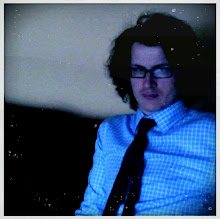New project: Shed W.I.P
Posted by Jona8than | | Posted On Friday, July 18, 2008 at 9:44 p.m.
To do a large scale three dimensional rubbing of a shed, which is then reconstructed through the hanging of the sheets of paper. The reconstruction is lit from the inside; illuminating the paper and creating an object that has a spectral quality about it. This project is in response to death and mourning, and the
This work is inspired by the art of Do-Ho Suh, and Rachel Whiteread. Though I also feel it comes out of the work I have pursued the previous year as well as my printmaking knowledge.
Detailed description:
The idea is to capture the nuances and details of a shed on my family property. The shed was built by my grandfather, all by his own hand. I would use large sheets of thin asian paper and do a rubbing of each side of the shed, including the roof. This would done all by my hand, using graphite sticks. The measurements would be :
By doing a rubbing of the surface of the shed, I would be creating a negative or inverse image of the shed. This would be related to the memories associated with the shed [ unsure of this]. The sheets would be hung, reconstructing the spatial area of the shed. The sheets would hang loosely from the top support through cable/string[?], giving a wavering quality to the work according to the environment conditions i.e: people walking past.
The structure would be lit from the inside by a LED light, the light would illuminate the the negative spaces created through the rubbing process. This would contrast against the dark grey of the graphite.
This is the first draft of this, so please comment and give me any criticism or advice.
This work is inspired by the art of Do-Ho Suh, and Rachel Whiteread. Though I also feel it comes out of the work I have pursued the previous year as well as my printmaking knowledge.
Detailed description:
The idea is to capture the nuances and details of a shed on my family property. The shed was built by my grandfather, all by his own hand. I would use large sheets of thin asian paper and do a rubbing of each side of the shed, including the roof. This would done all by my hand, using graphite sticks. The measurements would be :
By doing a rubbing of the surface of the shed, I would be creating a negative or inverse image of the shed. This would be related to the memories associated with the shed [ unsure of this]. The sheets would be hung, reconstructing the spatial area of the shed. The sheets would hang loosely from the top support through cable/string[?], giving a wavering quality to the work according to the environment conditions i.e: people walking past.
The structure would be lit from the inside by a LED light, the light would illuminate the the negative spaces created through the rubbing process. This would contrast against the dark grey of the graphite.
This is the first draft of this, so please comment and give me any criticism or advice.

The idea seems very much like the work of these two artists, but in that you are doing a rubbing of a shed, something seemingly much more local and rural, in this you separate from theirs. The fact that you are doing a rubbing 'by hand' of a shed that your grandfather built 'by hand' is an interesting angle. A copy of an original, a genetic copy in yourself. Also a comment it seems on the originality (of art and otherwise) of our times.
The 'wavering' quality of the hanging sheets could bring to mind the fragility of our memories, the transparency of them as well, the effect our environment, time and others have on such things. Also choosing a shed in the area of Atlantic Canada will call to mind nostalgia and memories from many visitors who hail from the area.
As far as the write up goes, if this is for a gallery make sure (as you most likely know) that the technical aspects and size / space are all carefully considered and mapped out.
Are you doing the rubbing of the interior of the shed or the exterior or both? The exterior might give me sense of trapped memories, more like a time capsule (although the transparency would probably nullify this). Either way this transparency and the subject will not escape the sense of death, of something past but still in existence.